Hanami Dango (花見団子) is a Japanese sweet Mochi dessert, where 3 different Dango balls, pink, white, and green, are skewered on a stick. In Japan, the end of March to April is the time of viewing and appreciating cherry blossoms (“hanami”). People go to parks where a lot of cherry trees are and eat and drink under the trees. Hanami Dango is commonly eaten during the cherry blossom season, although it is available all year round at many stores in Japan. Hanami Dango is so popular it is even represented by the emoji! 
What is Dango?
Dango (団子) is a Japanese sweet mochi dumpling made from rice flour. There are different types of flour you can use to make Dango, but we use Mochiko in our recipe. These are the types of rice flours you can make Dango with.
- Mochiko (餅粉) is a type of rice flour made from glutinous rice called mochigome (餅米). It is also called sweet rice flour. Since it is more commonly found outside of Japan, especially in the U.S., we use Mochiko in our Dango recipes. Mochiko is also used in various sweet mochi desserts.
- Shiratamako (白玉粉) is another type of glutinous rice flour, also made from mochigome. However, it’s processed differently from mochiko, and they resemble coarse granules. While it makes smoother and finer textured mochi or dango, Shiratamako is more expensive and harder to find outside of Japan.
- Joshinko (上新粉) is made from non-glutinous Japanese short grain rice called Uruchimai (うるち米). Joshinko adds good texture to the Dango, and it’s often mixed with Mochiko or Shiratamako that are made with glutinous rice.


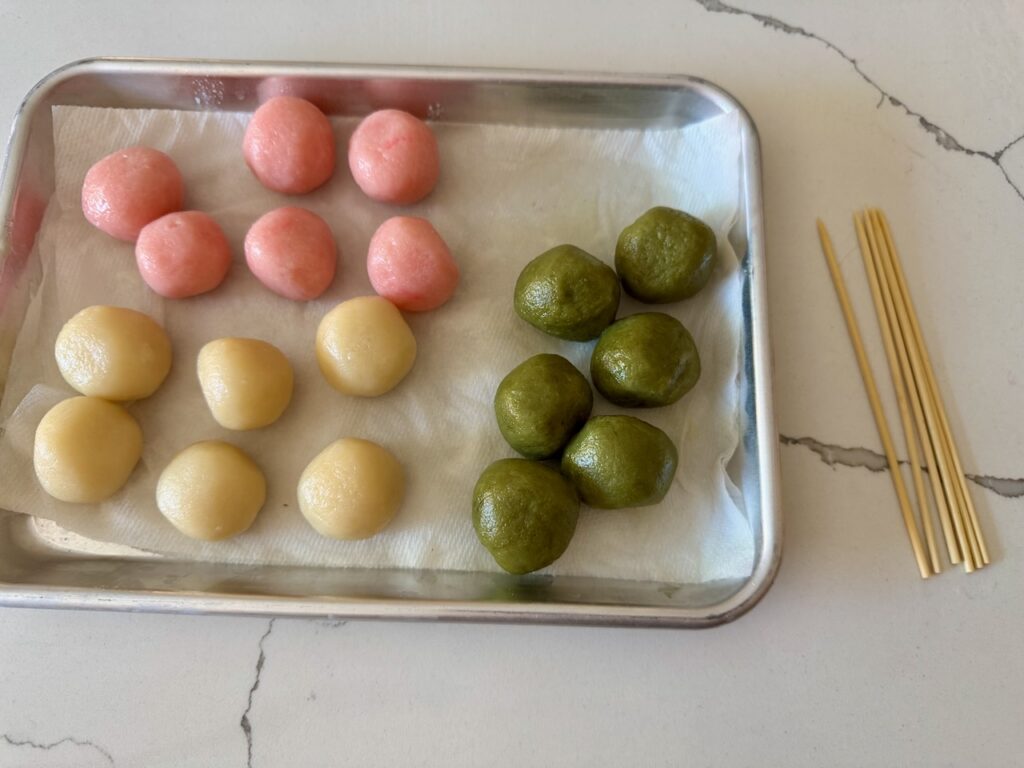
Colors and Flavors of Hanami Dango
- White is the base of all the dango dough used for Hanami Dango. Lightly sweetened with cane sugar, it does not need any additional flavors.
- Green is usually colored from Yomogi grass (cooked and pasted or powdered), but you could also flavor it with matcha green tea powder which is much easier to find outside Japan. Matcha tea flavored dango are so tasty, and that’s what we use in our recipe.
- Pink is from red food coloring most of the time, and it has the same flavor as white ones. However, you could add some Sakura flower buds (cherry blossom) and give it a beautiful decoration and a taste of spring.
More Dango Recipes
Short Video
A full recipe video is also available in the recipe box below and on our YouTube channel.
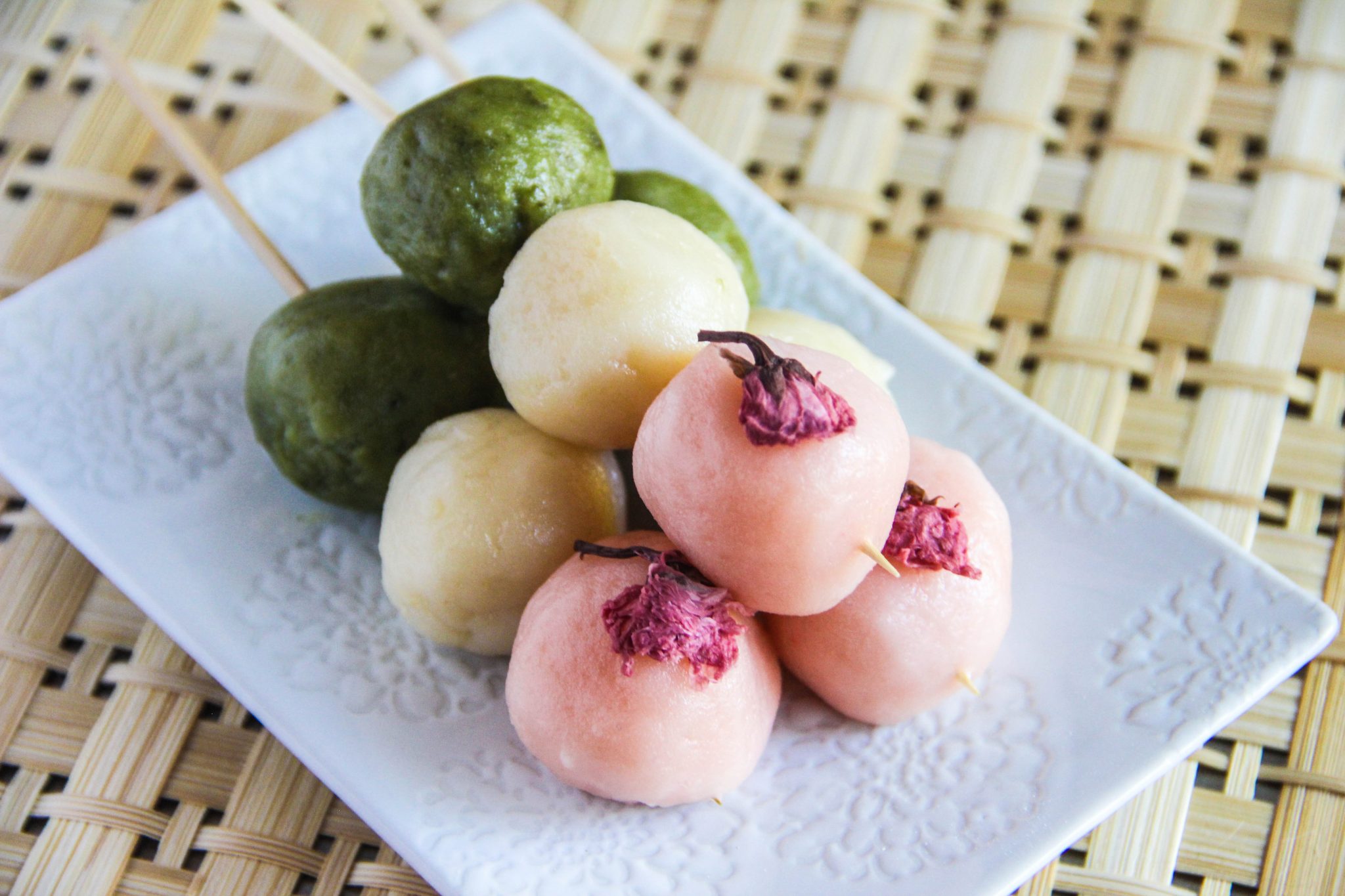
Hanami Dango
Equipment
Ingredients
- 8.5 oz Mochiko
- 8.5 oz Tofu (soft or silken tofu)
- 4 oz sugar
- 1 tsp Matcha green tea powder
- Red food coloring
- Salted cherry flowers (if available)
Instructions
- In a large bowl, mix Mochiko, Tofu, and sugar. Divide and separate the dough into 3 parts. Add green tea powder to one part and mix well until becoming a uniform color. Add a very small amount of red food coloring to another part and mix well. Leave the last dough white. Make table spoon size balls from each dough.
- In a large pot, boil water. Cook dough balls one color at a time. Once Dango balls float in the boiling water, cook 2-3 minutes longer. Take out from hot water, put on a paper towel, and let cool.
- Slide 3 different colored Dango onto each skewer. Decorate with cherry flowers if you like.
Video
Notes
This recipe was originally published in April 2016. The post was updated on April 15, 2025 with more useful content, new photos and a short video.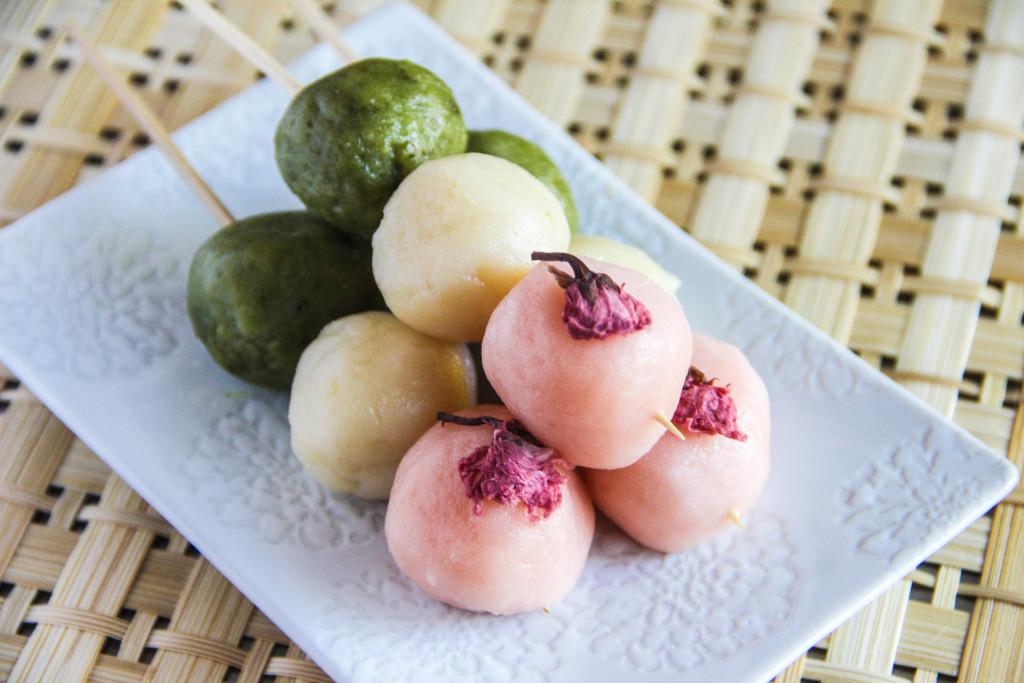
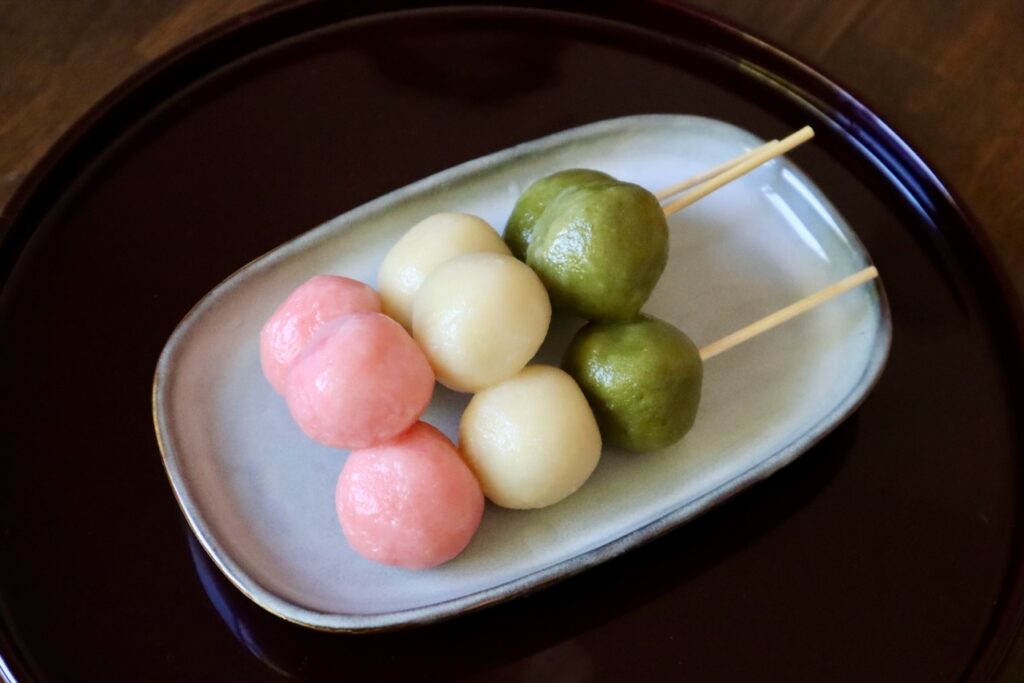
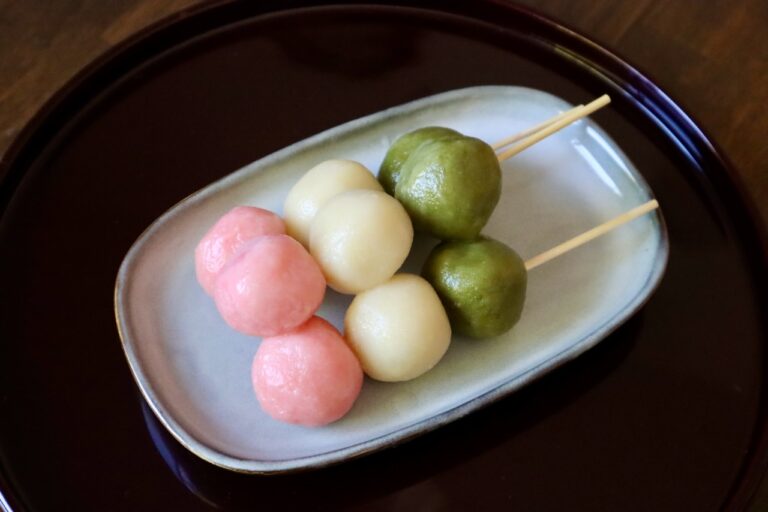

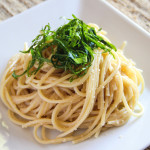
4 Comments
Hi!
Can I substitute tofu with something else?
I cannot find tofu in my area.
Thanks,
Perhaps you could buy tofu online?
Sorry, but can I substitute Mochiko with another flour, like sticky rice flour? It is difficult to find Mochiko in my area!
hello…
btw i try to make this tonight and the middle is still quite hard, only the outer part that chewy i have try to boil it again quite a long time but i don’t see any difference. Did i make a mistake? I am not sure thou but what i remember that the dango i ate when in japan always sticky, the outer and inside part. but maybe they don’t use tofu in it? I am not sure thou how to do with my dango now T^T